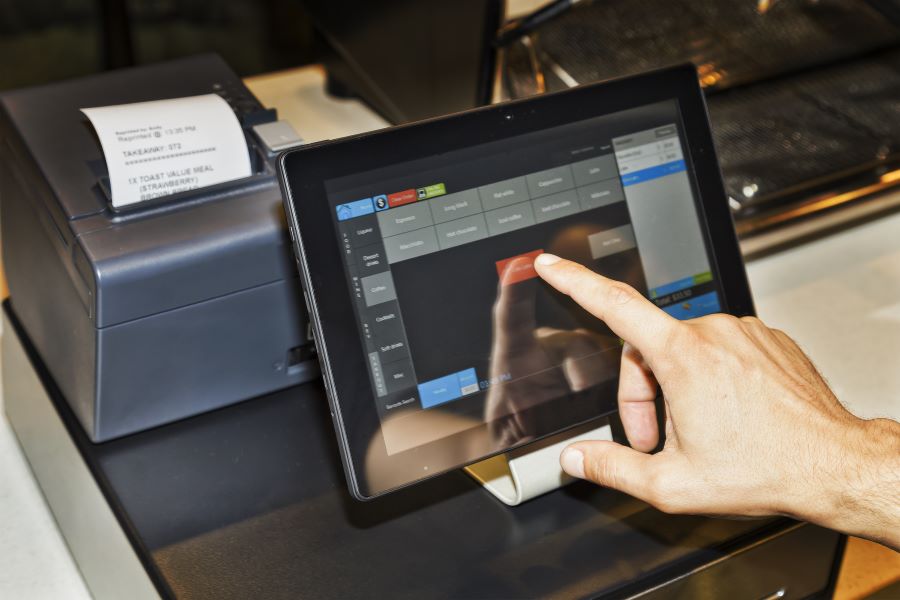8 Strategies for Increasing the Speed of Service in a Restaurant

People are very fond of eating out at restaurants for convenience or fun, so restaurants tend to be full to the brim during lunch, dinner time, and almost non-stop on weekends. This is a great problem for food business owners, but that also means that food operations efficiency is of the utmost importance.
Let’s talk about 10 ways to improve the speed of service of your restaurant.
How to Improve Speed of Service in Restaurant
Maintaining an efficient service in your restaurant is the key to meeting customer expectations, driving sales, and ensuring the success of any food establishment. Here are things to implement in your restaurant:
1. Standardize Recipes
Standardizing recipes helps ensure that every dish that comes out the kitchen tastes consistently and meets your standards regardless of who prepared it.
Develop detailed recipes with precise measurements, instructions, cooking times, and plating instructions to streamline production of every dish.
Standardized recipes help reduce errors, so they help reduce food waste and speed up the cooking process.
2. Implement Mise en Place
One of the tried-and-tested French culinary strategies to enhance efficiency in the kitchen is mise en place, which translates to “putting in place.” The practice involves preparing all the necessary ingredients and setting up tools ahead of time – before the restaurant opens.
Mise en place reduces unnecessary movements during cooking, minimizes downtime during service, and allows for quicker execution of orders. As a result, dishes are prepared and served promptly, improving overall speed of service without compromising on quality.
This strategy streamlines the workflow to reduce cooking time and promote a smoother service experience.

3. Incorporate Ready-to-Use Sauces, Seasoning Blends, and Beverage Mixes
Another sure-fire way to speed up the cooking process is by using ready-to-use ingredients, such as sauces, seasoning, and beverage mixes. Using these pre-made ingredients will cut down on steps and time from the food prep process.
Your staff can simply add them to the meat or dish being cooked, and you can guarantee that it will be consistent and meet your standards. Simple steps like marinating meat and making beverage mixes can be done by anyone.
Don’t worry, though! Using ready-to-use sauces and seasoning won’t make your food taste like everyone else’s. Oleo-Fats offers customizable seasonings, sauces, condiments, syrups, and beverage mixes that match your unique recipes. We tailor these specialized ingredients to your requirements so that each dish you make is still your signature.
Ready-to-use ingredients are a great way to enhance your restaurant’s speed of service without compromising on your food’s quality and taste.
4. Follow the FIFO Protocol
A well-managed inventory prevents delays caused by ingredient shortages or spoilage, allowing kitchen staff to maintain a steady pace of production and meet customer demands promptly.
A strategy to help manage inventory is FIFO or “first in, first out.” As its name suggests, this approach prioritizes ingredients based on their arrival dates. This is especially beneficial for perishable items like vegetables and meat.
By following FIFO, you ensure that the kitchen is adequately staffed all the time by avoiding spoilage. At the same time, FIFO guarantees that you serve fresh ingredients to your patrons every time.
5. Embrace Technology
We can’t talk about efficiency in a food business without mentioning technology! You can transform your food business by incorporating these technological innovations in your operations:
- Scheduling software automates staff rostering, ensuring optimal staffing levels at all times, especially during peak hours, thus minimizing understaffing and overstaffing.
- Reservation management systems facilitate smooth table turnover, reducing wait times for customers and maximizing seating capacity.
- Kitchen display systems (KDS) digitize order tracking, enhance communication between kitchen and front-of-house teams, and prioritize orders based on urgency, leading to faster preparation and service.
- User-friendly POS systems streamline order processing and minimize errors, as well as provide valuable insights into sales trends and customer preferences, enabling faster transactions and more informed decision-making.
Technology can serve as a support system for your whole team, aiding in collaboration and order processing. Such benefits contribute to reduced wait times, and ultimately, better speed of restaurant service so customers have a satisfying dining experience.

6. Keep Equipment in Tip-Top Shape
Since a lot of kitchen and front-end functions rely on technology, maintaining equipment is essential for optimizing kitchen operations and minimizing disruptions due to breakdowns.
Conduct regular maintenance, repairs, and equipment replacements to ensure that kitchen staff can work efficiently without interruptions caused by malfunctioning or inefficient tools.
A proactive approach to equipment maintenance not only results in seamless cooking processes but also prevents prolonged downtime during busy service hours. Overall, this practice contributes to the restaurant’s overall efficiency and customer satisfaction.
7. Establish Clear Staff Roles
Maximize your team’s talents by establishing clear roles and responsibilities for each team member. This way, each staff member knows what they’re supposed to do to support their team. They can accomplish their tasks with minimal supervision, thus maximizing productivity.
By defining each staff member’s role, assigning tasks based on expertise and experience, and promoting effective communication channels, kitchen operations run smoothly and efficiently. Everyone knows what they need to do, minimizing downtime and the need to delegate tasks.
Establishing clear roles also minimizes confusion and facilitates independent, quicker decision-making, all of which contribute to faster service and enhanced customer satisfaction.

8. Prepare a Contingency Plan
A lot of unexpected situations could happen and disrupt your operations. You can minimize these impacts on your operations by anticipating and planning for various contingencies and familiarizing your employees on each protocol.
Develop a contingency plan for equipment failures, inventory shortages, or staffing issues since these are the most common issues food businesses face. An example of a contingency plan is cross-training employees so they can adapt and fill in for another employee or establish a protocol to be implemented if the POS system breaks down.
With a contingency plan in place, you can maintain the speed of your restaurant operations no matter what happens.
Embrace Efficiency Without Compromising Quality
At the core of an excellent dining experience, besides delicious food, is the efficiency of the restaurant’s operations and the speed of its services.
By implementing these strategies on improving the speed of service in your restaurant, you can drive operational efficiency and excellence without driving your team toward burnout nor compromising your food’s quality.
Oleo-Fats is committed to providing ready-to-use sauces and seasonings that not only help enhance taste, but also contributes to a food business’s efficiency. Want to know more about our ready-to-use ingredients? Leave us a message and we’ll get in touch with you!


